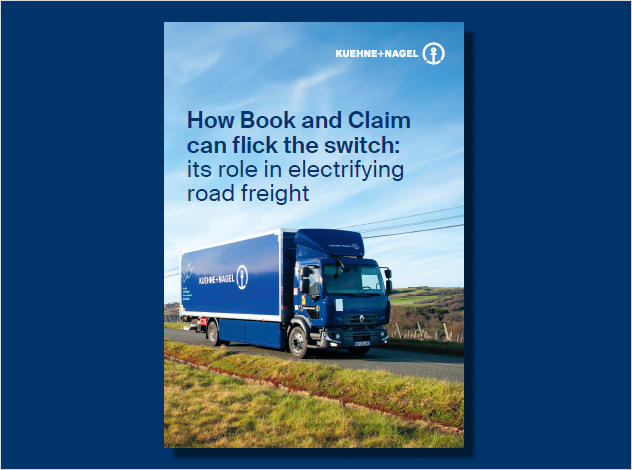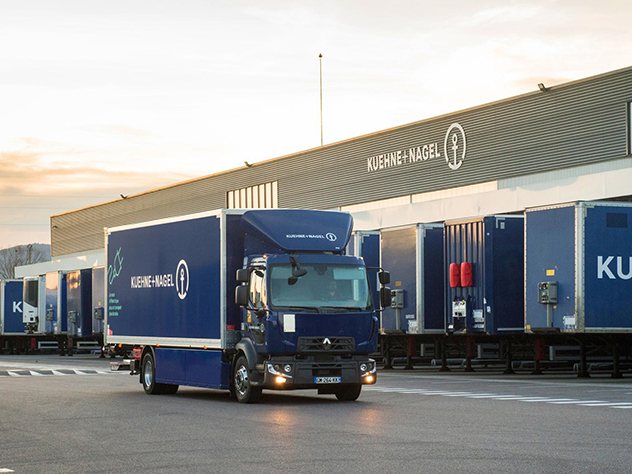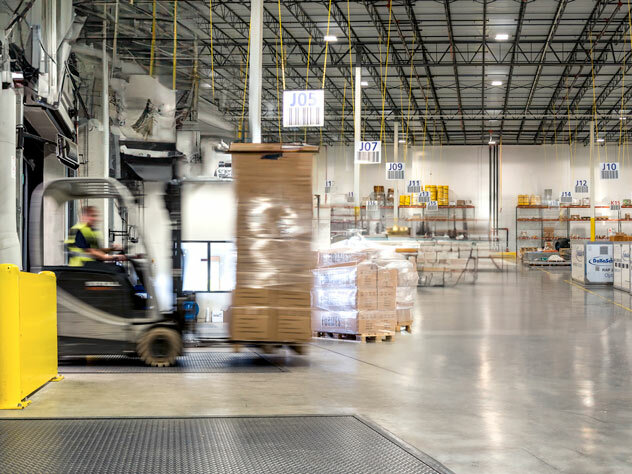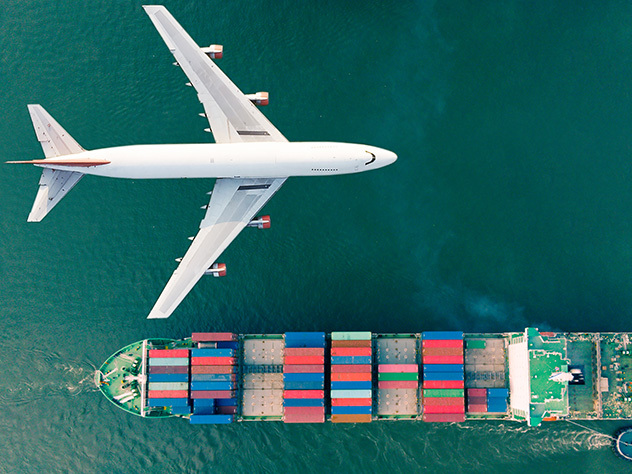Back Sustainability in logistics—get answers to the most pressing questions
Market Insights
Sustainability in logistics: 10 key questions you should ask
1. How can logistics help us achieve our sustainability goals?
Sustainable logistics focuses on two essential components: measuring and reducing your carbon footprint. Practical strategies include using Sustainable Aviation Fuel (SAF) and Sustainable Marine Fuel (SMF), which allow you to invest in sustainable options even when local availability is limited. Mode shifts, such as transitioning from air to sea or rail transport, significantly reduce emissions without sacrificing efficiency. Additionally, optimising routes and adopting energy-efficient fleets can drive you closer to achieving your sustainability goals.
2. How do we stay ahead of sustainability reporting requirements?
To meet evolving global reporting standards, staying informed and leveraging the right tools is crucial. Platforms like myKN make it easier to track, calculate, and report emissions in compliance with recognised frameworks. By tapping into logistics expertise, businesses can ensure accurate carbon offset reporting and confidently navigate the latest regulations and best practices for sustainability reporting.
3. What’s the most effective way to reduce
Scope 3 emissions?
Scope 3 emissions—those generated across your value chain—are often the most challenging to address. Partnering with logistics providers that offer low-emission solutions, such as biofuels, electric vehicles (EVs), and optimised routing, is a proven way to drive meaningful reductions. Advanced tracking tools enable precise emissions measurement, while targeting high-impact supply chain activities ensures the most effective results.
Also see our Reuters Events TM Webinar on tackling Scope 3 emissions: Main page - Reuters Events | Kuehne+Nagel
4. What are the costs of sustainable logistics—and are they worth it?
While sustainable logistics may require upfront investments—such as in low-emission fuels, energy-efficient warehousing, or sustainable packaging—these efforts often lead to significant long-term savings. Operational efficiencies, like smarter routing and optimised packaging, reduce costs over time. Book and claim systems offer a scalable, cost-effective way to support sustainability, while logistics providers can deliver flexible solutions tailored to your budget and goals.
5. How available are alternative fuels like SAF and SMF?
Sustainable Aviation Fuel (SAF) and Sustainable Marine Fuel (SMF) are vital to reducing carbon emissions but are not yet widely available everywhere. Book and claim systems solve this challenge by allowing businesses to support sustainable fuels regardless of physical supply limitations. Working with logistics providers who actively expand their fuel availability networks ensures you can access immediate sustainability benefits and earn credits for using SAF and SMF.
6. How are CO₂ emissions calculated in logistics?
Accurate emissions data is essential for understanding and reducing your carbon footprint. Platforms like myKN provide real-time CO₂ tracking and reporting, following globally recognised standards such as the GLEC Framework. This ensures access to reliable, transparent data to guide your sustainability decisions and measure progress.
7. Why is transparency crucial for sustainable logistics?
Transparency is key to building trust and achieving measurable sustainability progress. By using tools like myKN, businesses gain access to emissions data, tracking, and reporting tools that provide clear, actionable insights. Transparent reporting not only demonstrates your commitment to sustainability but also enables collaboration with stakeholders and supply chain partners to optimise operations.
8. What sustainability best practices are leading companies adopting?
Leading companies are adopting innovative logistics strategies to minimise environmental impact. Mode shifts—such as transitioning from air freight to Sea-Air Logistics—offer significant emissions reductions. Electric vehicles (EVs) are being increasingly used for pre-carriage, on-carriage, and main transport routes. Transparent data sharing and advanced supply chain optimisation continue to set new industry standards for sustainability.
9. Can sustainable logistics options meet our speed and efficiency needs?
Sustainable logistics solutions are designed to balance environmental impact, speed, and efficiency. Sea-Air transport, for example, reduces emissions while maintaining faster transit times than sea freight alone. Route optimisation powered by data analytics ensures efficient deliveries without disruptions. Sustainable options integrate seamlessly into operations without compromising performance or reliability.
10. What level of support should we expect from our logistics provider?
Achieving sustainability goals requires the right level of support and expertise. Logistics providers should offer tailored guidance to help you integrate sustainable practices while balancing cost and efficiency. Tools like myKN deliver clear emissions reporting and tracking, ensuring transparency every step of the way. Innovative solutions—such as SMF integration, electric vehicle fleets, and carbon-neutral transportation—demonstrate a commitment to driving sustainability forward.












